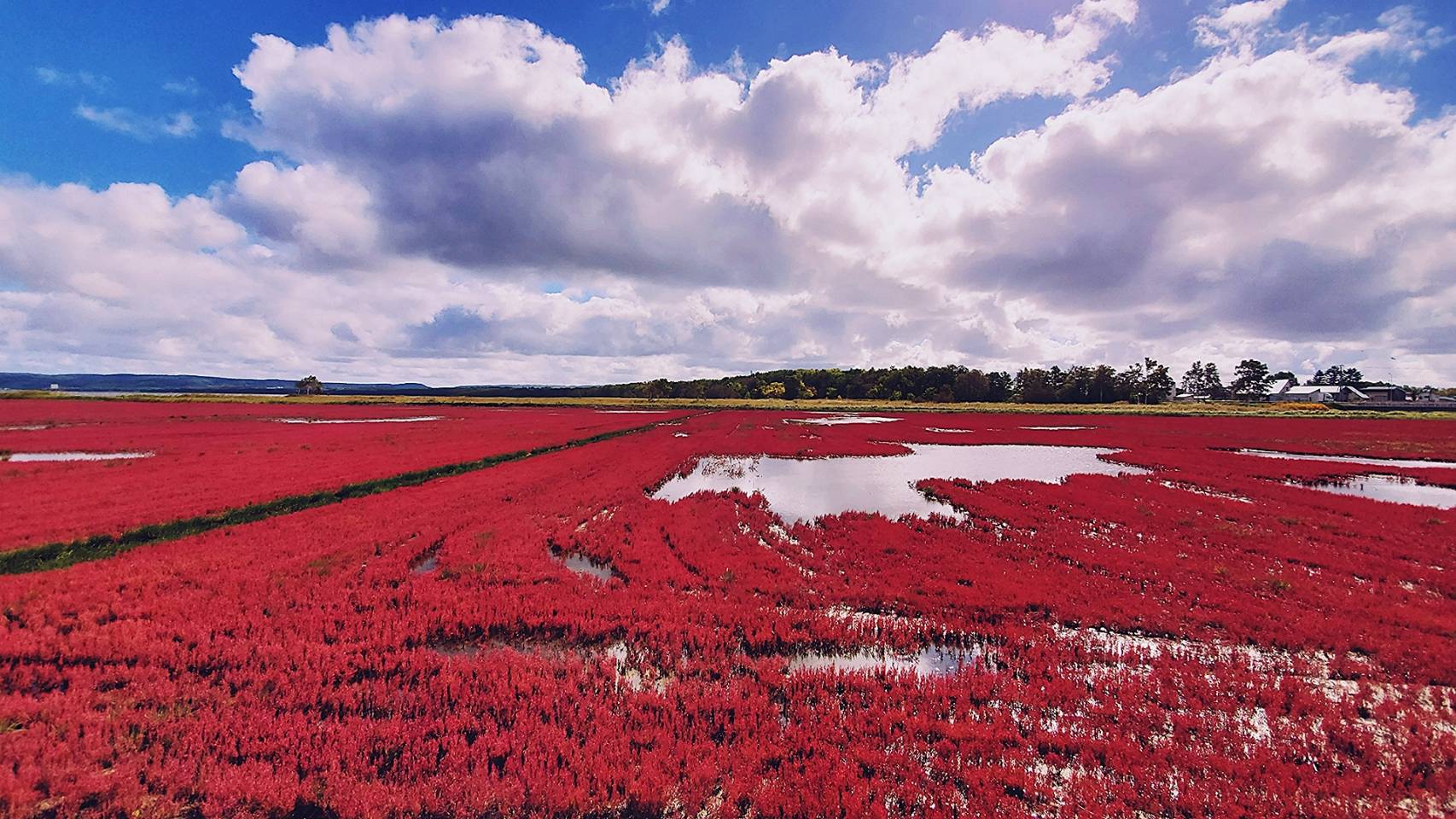The winter in Hokkaido is beautiful but too long and harsh
A hometown is a place to long for from a distance, not to actually live in. This is the English translation of a Japanese famous proverb that often crosses my mind especially around this season. After graduation from college, I had been outside my hometown (Asahikawa, Hokkaido) for about 15 years. Indeed, for a while after coming back, I was just glad to escape from the crazy summer heat and humid climate of the main island of Japan, but now I have been fed up with the long, cold, and snowy winter in my hometown. I know this is man’s foolish nature, like crying for the moon, but the winter in Hokkaido is so long and harsh.
The autumn in Hokkaido is short but beautiful
Due to the long winter, the autumn in Hokkaido is relatively short but very beautiful and worth coming even from overseas! It’s like all living things try to squeeze out their last energy before winter. The mountains turn to burning red and orange. Bears lively wander about for food before hibernation, though I never want to encounter them. A lot of salmon comes back to its home rivers for spawning, as I wrote last week. Only recently, I stopped crying over spilt milk, and have made up my mind to enjoy out the short but beautiful autumn in Hokkaido.
Having said that, I think it’s sometimes difficult for us to find the good in our own hometown because it’s too close to see objectively. Making matters worse, it’s autumn, the season that I regarded as a time just to be mentally prepared for guillotine (winter). In such a case, in order to gain objective information about hometowns, what helps us is “travel YouTubers.” As checking some videos by such YouTubers to introduce Hokkaido, I found very beautiful scenery only seen in autumn. The YouTuber introduced it as a magnificent view that we’ll want to see before we die. It’s the field of coral grass (the ones consisting of the red field in the first image).
You’ll never see it again
What makes it more attractive is its vegetation. It’s an annual grass growing in a seaside swamp. The flow of water moves the seed, and the colonies of coral grass move around in the swamp every year. Accordingly, the expression of the coral grass field changes every year. The coral grass field you see this year is different from what you will see in the future. The following image is the one I shot two weeks ago, though I know it doesn’t do justice. Anyway, the photo won’t ever be the same next year even if I take it from the same place. The beautiful scenery you get to see there is always serendipity.

We are part of nature
Coral grass is fragile and highly likely to be invaded by other plants in the current semi-artificial environment. It can’t survive without our protection any more, which is similar to the forest around us. For example, if we cut some trees for our furniture making, vegetation will change in the place around the cut trees mainly due to the access of direct sunlight. If we plant some trees of the same species in the same place (this is what we’ve been doing every year, by the way), they can’t survive without our support. As it has been stated sometimes in my past articles, this is our karma or obligation. Once we’re involved in the natural environment, we have to continue our involvement because we are part of nature.

Shungo Ijima
He is travelling around the world. His passion is to explain Japan to the world, from the unique viewpoint accumulated through his career: overseas posting, MBA holder, former official of the Ministry of Finance.

